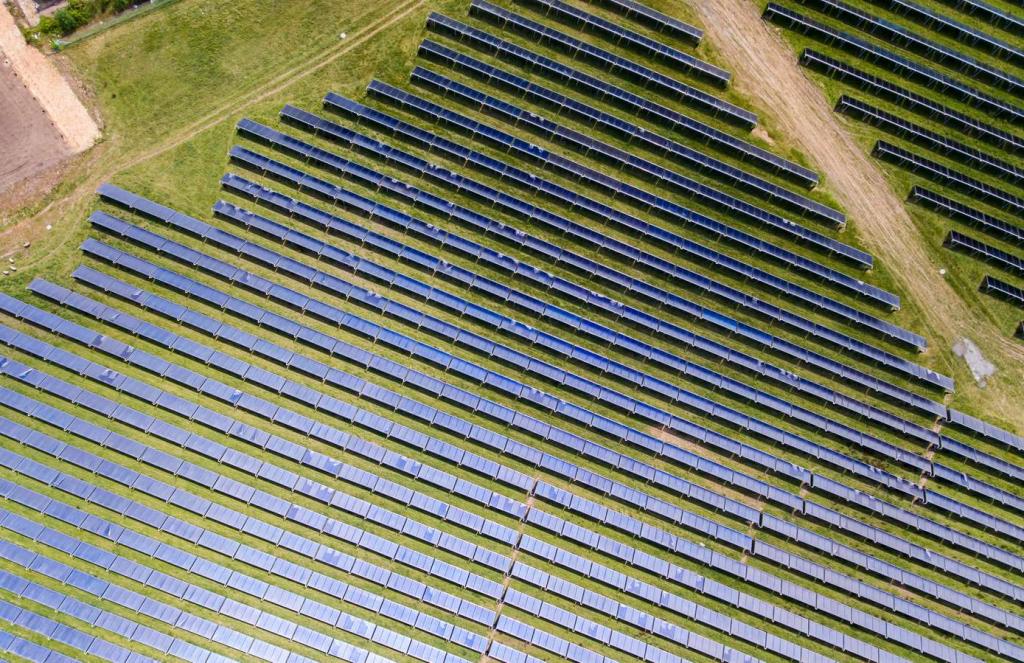Thessaloniki gets ready for its metro launch in November
The underground rapid transit lines have been under construction for almost two decades due to various project delays
 TheMayor.EU logo
TheMayor.EU logo 
The two photovoltaic plants will be developed in Lysabild and Stevning, Source: Sønderborg Municipality
They will supply 19,000 households with electricity
The Danish Municipality of Sønderborg will soon come closer to reaching its goal of becoming CO2 neutral by 2029, thanks to the establishment of two new photovoltaic systems. With these two systems, the city plans to supply 19,000 households with electricity.
Clean Energy Advisors ApS will establish one of the plants in Lysabild. The local plan proposal for the 32-hectare plant has been outlined and submitted for public consultation. The City Council is expected to approve this plan following its meeting on 25 August.
On its website, Sønderborg Municipality revealed that Better Energy will develop the second photovoltaic facility in Stevning. This plant will reportedly be slightly larger than the one in Lysabild, covering 36 hectares of land. Together, the two systems will help the municipality cut down its CO2 emissions.
Chairperson of the Technical and Environmental Committee Aase Nyegaard commented on the importance of these two plants, noting: “The UN’s new climate report is a clear call to make an effort for the climate, and we do so in Sønderborg Municipality. First and foremost, I am pleased that we are constantly reducing CO2 emissions and thus moving closer to a better future for our grandchildren and their descendants.”
Nyegaard went further, stressing that everyone must do their part in the fight against climate change if they wish to see the municipality achieve its goal of becoming CO2 neutral. Giving an example of this type of attitude, she praised Sønderborg’s farmers for their efforts in helping the city find suitable areas for the installation of the photovoltaic system.
With the establishment of the plants in Lysabild and Stevning, Sønderborg Municipality will come closer to achieving its climate goals. However, it still requires the help of citizens and institutions to become CO2 neutral by 2029.

The underground rapid transit lines have been under construction for almost two decades due to various project delays

Now you can get your wine in Talence by paying directly in Bitcoin

That’s because the state has to spend money on updating the railway infrastructure rather than subsidizing the cost of the popular pass

Rethinking renewable energy sources for the urban landscape

The examples, compiled by Beyond Fossil Fuels, can inform and inspire communities and entrepreneurs that still feel trepidation at the prospect of energy transition

Now you can get your wine in Talence by paying directly in Bitcoin

The 10th European Conference on Sustainable Cities and Towns (ESCT) sets the stage for stronger cooperation between the EU, national and local level to fast track Europe's transition to climate neutrality.

At least, that’s the promise made by the mayor of Paris, Anne Hidalgo

The underground rapid transit lines have been under construction for almost two decades due to various project delays

At least, that’s the promise made by the mayor of Paris, Anne Hidalgo

Hostal de Pinós is located in the geographical centre of the autonomous region

Despite its church-y name, the district has long been known as the hangout spot for the artsy crowds

Urban dwellers across the EU are having a say in making their surroundings friendlier to people and the environment.

Forests in the EU can help green the European construction industry and bolster a continent-wide push for architectural improvements.

Apply by 10 November and do your part for the transformation of European public spaces

An interview with the Mayor of a Polish city that seeks to reinvent itself

An interview with the newly elected ICLEI President and Mayor of Malmö

A conversation with the Mayor of Lisbon about the spirit and dimensions of innovation present in the Portuguese capital














